Review: LG V20 for AT&T
Nov 4, 2016, 3:00 PM by Eric M. Zeman
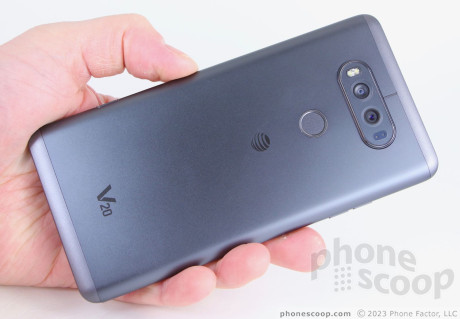
The V20 is LG's biggest, most advanced Android smartphone to-date. The V20 boasts three cameras, a quad HD screen, superior audio capture, and the interesting Second Screen display. It's one of the first few phones to ship with Android 7 Nougat and comes with a staggering amount of software to manage. Is LG's behemoth the right camera-focused flagship for you? Find out in Phonescoop's full report.
Is It Your Type?
The LG V20, with its dual cameras and huge screen, targets the photo and phablet lovers of the world. It's a high-end handset that packs incredible performance in a metal-skinned slab. If you can stomach the astronomical price tag, the LG V20 is a worthy alternative to flagships from Google and Apple.
Body
The LG V20 drops the over-wrought design of last year's V10 for a simpler, more polished look. LG clearly took the basic template from its own G5 handset (minus the modularity, of course) and applied it to the V-series. The result is a gigantic metal handset with rather simple lines and a surprising amount of flexibility.
Last year's V10 included polished metal rails along the sides, and a toughened polycarbonate rear panel. It was strong as hell, though rather chaotic as far as looks were concerned. The V20 adopts a more refined approach in its stylings and is more cohesive as a result. I appreciate the cleaner lines. Some might say the V20 betrays the V10's personality in the process; I value the refinement. True, it's another metal-and-glass handset where there's little room for design innovation these days, and yet the V20 somehow manages to avoid boring me-too looks.
The V20 is one of the biggest and heaviest phones I've reviewed this year. It's a bit bigger than both the Google Pixel XL and Apple iPhone 7 Plus. There's no doubt the V20 is a two-handed phone. My thumb can reach only about 40% of the screen comfortably. I have to perform some serious hand acrobatics to reach the top of the screen, which places the phone in dire jeopardy of slipping from my grasp. The phone is hella-wide, making it hard to grip tightly. Thank goodness LG kept the thickness to 7.6mm. The V20 is slim enough to drop into your loose pockets, but you'll have to jam it down if you have tight pants.
LG settled on a mix of materials in crafting the V20. The build quality is very good, but just short of excellent. I have no problem with the huge glass panel that forms most of the front surface, nor the aluminum shell that covers the rear and helps form the side edges. These components are fine. I do, however, dislike the plastic caps that form the V20's chin and forehead. The plastic allows wireless signals to pass through, so I understand their purpose. Sadly, the seams between the plastic caps and metal rear panel are uneven and create an edge that catches your skin. I noticed a similar issue with the LG G5 earlier this year. That issue aside, the V20 is otherwise a solid phone that feels every bit as expensive as it is.
The V20's face is dominated by the display panel. The black glass covers the bulk of the front, with the slim plastic caps providing contrasting bookends. The caps are both angled away from the display. The user-facing camera module is plainly visible in the glass. The Second Screen remains illuminated even with the main display is off, so the date, time, and battery indicators are always visible in the top right of the V20's face. LG's logo is practically invisible below the display. There are no buttons on the front, as the V20 uses software controls.
LG separated the volume toggle into two distinct buttons and stuck them on the left edge of the phone. The buttons are a little small for my tastes. Travel and feedback are decent, but not the best. You might be fooled into thinking the lone button on the right edge of the phone is a dedicated camera key. It's not; instead, this button releases the rear aluminum panel. The button is spring-loaded and works well — just don't press it when you're trying to take a picture. The top edge houses an IR port and microphone, while the bottom edge holds the speaker, USB-C port, and stereo headphone jack.
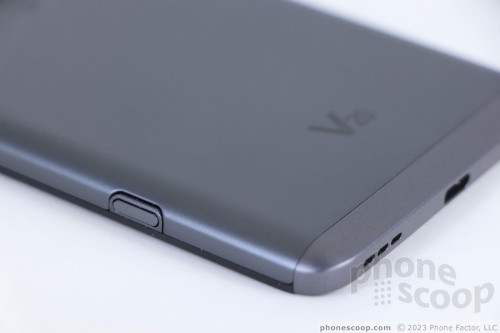
Like many LG handsets, the screen lock button is positioned on the rear surface of the phone. In this case it doubles as a fingerprint reader. It's a small circle and is indented just a bit. I didn't have any trouble locating or using the button by feel. Travel and feedback are good. The monstrously big camera module is positioned above the screen lock button. The module measures 1.68 inches wide and juts out from the rear surface like a tiny island. It has a chrome rim that makes it stand out (even more) visually. The module contains two separate cameras as well as a dual-LED flash and the focusing array. It's big.
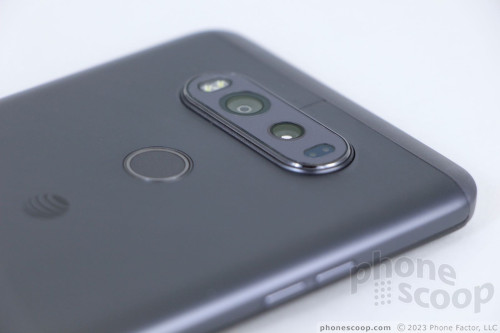
Amazingly, LG decided to give the V20 a removable rear panel. A press of the side button pops the latches holding the panel in place. It's quite easy to remove and snap back into place. By itself, the rear, metal panel is quite rigid. The V20 boasts a removable battery, too, a feature that is becoming quite rare for premium handsets. The phone also includes a slot for memory cards. The slot is stacked atop the SIM card slot. You can swap memory cards without pulling the battery, but not SIM cards.
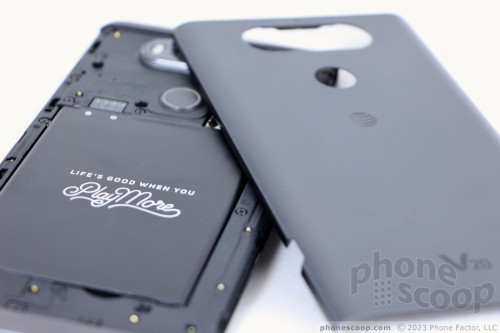
The V20 is not water resistant.
The LG V20 is a very, very good piece of hardware that many people will surely enjoy. It is ridiculously big, but the design works, and features such as the removable battery and memory card support make up for the small inconsistencies in build quality.
Screen
The primary screen measures 5.7 inches across the diagonal and boasts quad HD (2560 by 1440 pixel) resolution. This is as big and as pixel-rich as displays get at the moment. As usual, LG used an LCD panel, and it looks amazing. The screen's large dimensions don't diminish the huge pixel count; you won't see any individual pixels anywhere. Colors are accurate and viewing angles are excellent. The screen was usable outdoors under direct sunlight even with brightness set as low as 50%. It's truly a fine, competitive display. Like many high-end devices, the screen includes a blue-light setting that will kick in late at night to reduce eye strain.
The V20 just barely fit into my Google Cardboard viewer, but 360-degree photos and other content looked very good. High resolution displays like this are critical for a good VR experience.
The second screen at the top is 2.1 inches across with 1040 by 160 pixels. I found it rather hard to see outdoors, but it's bright enough for easy use indoors. I wish you could adjust the second screen's brightness independently from the main display, but you cannot. The resolution is fine for such a small display and the small icons and text it displayed looked clean and sharp.
Signal
LG sent me the AT&T variant of the V20, though variants are available to all major carriers. The V20 performed well enough in and around New York City, but it fell a little short when compared to some other AT&T phones I've tested recently. The radio always remained attached to LTE and never dipped to 3G, even in poor coverage areas. Phone call connectivity was the most obvious shortcoming. The V20 was prone to missing calls and dropping calls in weak coverage areas, something most competitors have managed to avoid lately. Data speeds were generally very good no matter the signal conditions, though not the best I've seen. The V20 handled browsing media-rich social networks with no problem and didn't give me any trouble streaming music or video over LTE.
The V20 is one of the first phones to include support for LTE Band 66, a huge amalgamation of AWS-1, AWS-3, and AWS-4 spectrum blocks. Right now, T-Mobile is the only carrier offering some service in Band 66. AT&T and Verizon own spectrum in these blocks, but have yet to deploy it. Bottom line: people who buy the T-Mo variant of the V20 may see faster data performance.
Sound
LG made a bang-up voice phone in the V20. Voice calls are consistently loud and clear. Callers often sounded like they were standing in the same room. The earpiece pushes out loud, punchy sound with no distortion, making the device usable in even the noisiest environments. You can likely get away with setting the volume at about 60% most of the time. People I spoke to through the V20 said I sounded very good. The V20's vocal clarity outperforms most other handsets I've tested on AT&T lately.
The speakerphone delivers plenty of volume while also keeping distortion to a minimum. The speakerphone can easily fill an entire room with sound and it's a fine companion should you need to make a call from a moving car.
Ringers and alerts can deliver enough sound to make anyone jump out of their skin. The vibrate alert is good, too. Moreover, LG's software allows you to dial in the strength of the vibration alert for different notifications, such as calls or texts. There are also five pre-loaded vibration patterns, and you can record your own. That's cool.
It's worth adding that the V20 includes a high-quality DAC for wired music listening. It puts out very clear, powerful sound when plugged directly into a speaker or stereo system. I tested the V20 with several small speakers, my home theater, and a large PA system. There's no doubt wired sound performance is excellent, and dramatically superior to Bluetooth music playback.
Battery
The V20 has a 3,200 mAh battery, which is average for this class of device. The phone easily delivered a full waking day of power; it lasted from breakfast to bedtime consistently with some power to spare. I kept all the radios on, and left the screen brightness set at 50% with the "auto-brightness" tool engaged. I was not able to kill the battery entirely, not once, while I tested the V20.
Part of the reasoning behind the Second Screen is to help save battery power. The idea is you can glean the time, date, and basic notifications without ever turning on the power-sucking main display. The Second Screen is certainly helpful, but it's unclear if or how much it really helped the battery life in our testing.
LG gave the phone several tools to help manage battery life. To start, it has the basic Android power saver mode, which kicks on when the battery reaches 15%. When turned on, this automatically dims the screen, reduces processor output, and cancels vibrate alerts. The V20 also has a setting that specifically reduces the processor power given to games. Thanks to decent battery life, I didn't need these tools while I reviewed the phone.
Lasty, the V20 supports Quick Charge 3.0 through its USB-C port. Thanks to the included fast charger, the V20 will power up quickly when needed. It doesn't support wireless charging.
Bluetooth, GPS, NFC, WiFi
The V20's secondary radios all functioned properly. Bluetooth was a cinch to use and the NFC radio helped me pair the V20 with a wide array of Bluetooth accessories. I used the V20 for several calls via my car's hands-free system and they sounded very good. Music had a rich sound when passed through a good Bluetooth speaker, but I've heard better.
You can use the NFC radio for mobile payments via Google's Android Pay service if you want. LG is still working on its own branded mobile payment service, which is not expected to debut until next year.
Google Maps and the V20's GPS radio were bosom buddies. The phone located me within seconds and was accurate to about 10 feet. That's excellent. Real-time navigation between points worked flawlessly.
The WiFi worked just fine.
Comments
No messages


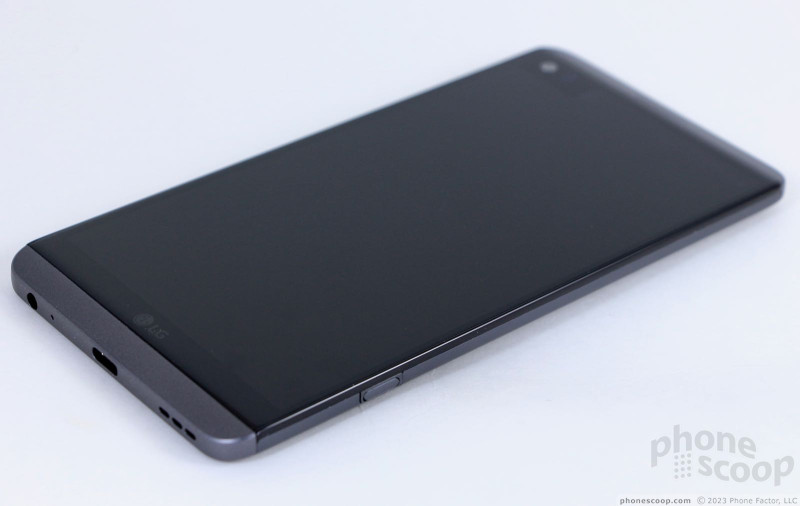















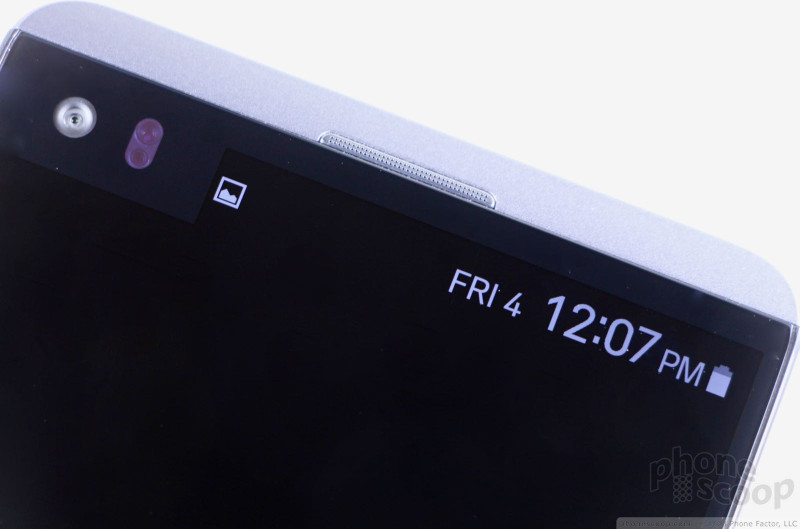



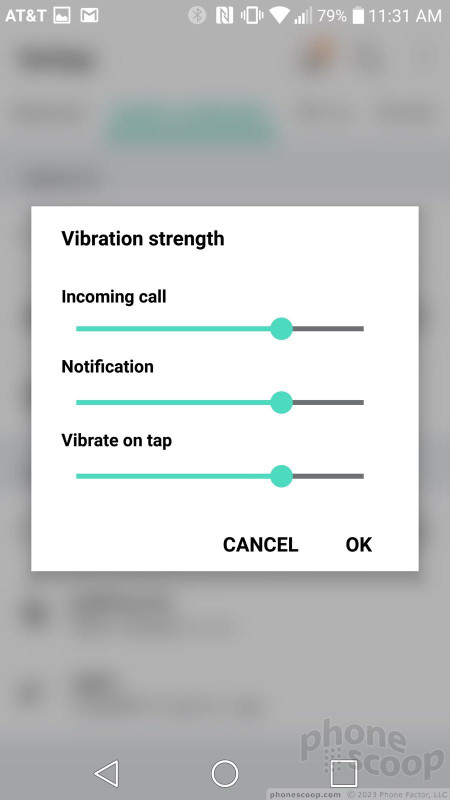


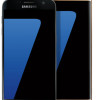 Sprint Flips On 3-Channel Carrier Aggregation for iPhones and Galaxies
Sprint Flips On 3-Channel Carrier Aggregation for iPhones and Galaxies
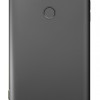 T-Mobile Shares Pricing Details for LG V20
T-Mobile Shares Pricing Details for LG V20
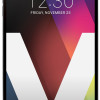 AT&T Shares LG V20 Pricing and Availability
AT&T Shares LG V20 Pricing and Availability
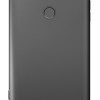 T-Mobile to Sell LG V20 Starting October 28
T-Mobile to Sell LG V20 Starting October 28
 LG Announces the V20 With Android 7, Second Screen, and Dual Cameras
LG Announces the V20 With Android 7, Second Screen, and Dual Cameras
 LG V20
LG V20










